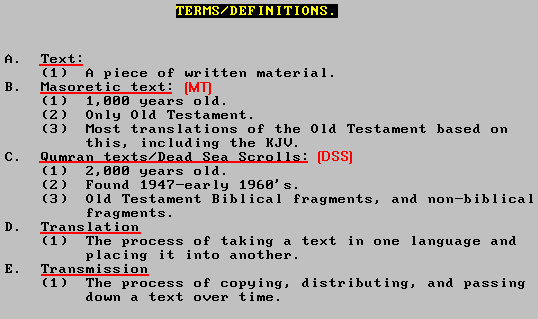
1: INTRODUCTION
The following terms should be kept in mind throughout this presentation.

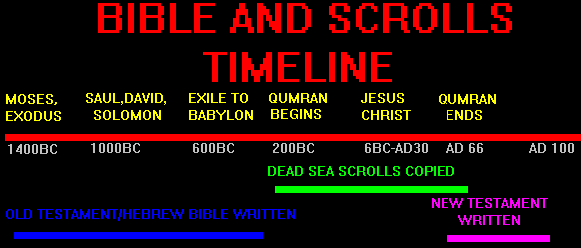
The Bible is a library which was written over a 1500 year period, from about 1400 BC to AD 90. The Protestant Bible has 66 books; 39 are in the Old Testament, and 27 are in the New Testament.
The Dead Sea Scrolls (DSS) contain fragments of every Old Testament book except Esther. However, there are NO New Testament fragments in the DSS.
Most of the Old Testament was written in Hebrew, and a few chapters were written in Aramaic. The New Testament was written in Greek. In addition, before Jesus' birth the Old Testament was translated into Greek.

Here are some of the characteristics of the languages of the Bible. Greek, like English, goes from left to right. Hebrew and Aramaic go right to left.
HELPFUL HINT 1: If you do not know Hebrew, consider yourself an art critic when looking at many of the Dead Sea Scroll materials.
The physical shape of Hebrew letters has changed over time. The Old Testament was originally written in what is called Paleohebrew (more chicken-scratch looking). Not only is its appearance different, but words could begin on one line and be finished on the next. Some of the DSS are written in Paleohebrew.
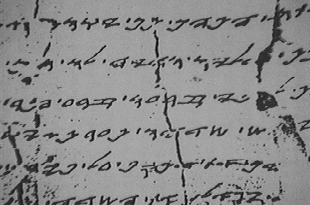
The Jews later adopted a more square Aramaic Script, which is used in most of the DSS.
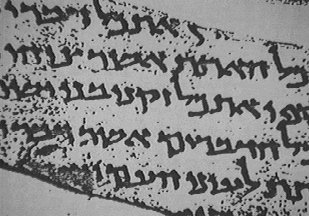
Hebrew Bibles today are printed in an updated Aramaic Script.
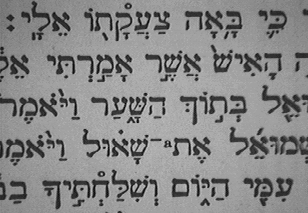
Here the three Hebrew scripts are above each other. The two in the middle are both Dead Sea Scrolls using the Aramaic square script.
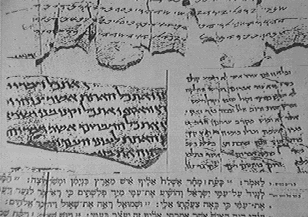
The Hebrew of the Old Testament was written without vowels (they were pronounced, just not written). Hebrew Bibles today add various kinds of dots and marks to represent vowels. Most of the extra dots and marks are vowels which were added later to the text (some are accents).

In addition, some of the Dead Sea Scroll scribes added consonants to represent vowels (e.g. Y for e and i, W for o and u, H and ' for A).
Many people think that reading without vowels would be extremely difficult. However, we could all get used to it if necessary. Try reading the next two English examples without vowels.
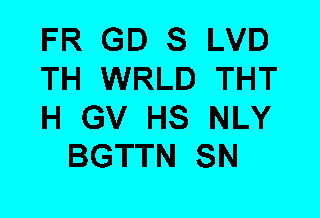
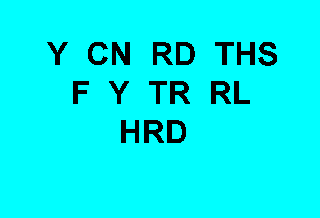
See, you CAN read without vowels!
Most of the Dead Sea Scrolls (DSS) were written in Hebrew and Aramaic. However, some DSS are Greek translations of Old Testament books. In those days Greek was written in all capital letters, without any word divisions.
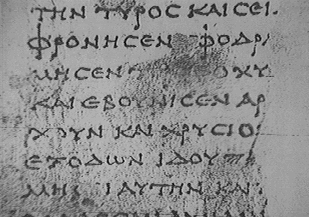
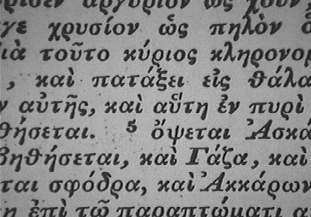
As with the vowels in later Hebrew texts, Greek word divisions, accents, and lower case letters are much later additions/changes. Here is a typed Greek text.
Compare the appearance of the two; the DSS is on the top.
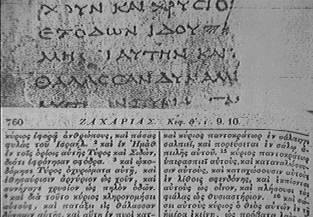
It must be stressed, and stressed again, that WE HAVE NO ORIGINAL BIBLICAL TEXTS, Old or New Testament. An original existed, but all we have are copies which have been passed down over a long period of time. The original texts were passed down and at some point in time went two directions: (1) to the DSS; and (2) to the MT.

The Masoretic Text (MT) is approximately 1,000 years old. Prior to the discovery of the Dead Sea Scrolls, it was the oldest major collection of Old Testament texts in existence; indeed, it is complete. The MT forms the basis for virtually all Old Testament translations since the King James Version. The Dead Sea Scrolls (DSS) are about 2,000 years old -- a thousand years older than the MT. The question for many is: how close are these texts? How well was the Bible passed down? It is this question which the Dead Sea Scrolls project has set out to answer.
Quite often, when differences occur, older texts are considered closer to the originals (e.g. the DSS). With many DSS this is the case.
However, the following chart shows one possible scenario where this might not be the case.

The above illustration shows that an older text is not necessarily closer to the original text. It is possible that a newer text has passed through fewer hands, and is therefore closer to the original. In other words, just because there is a difference in a DSS document does not necessarily mean that the DSS is better.
Some DSS scribes strove for accuracy. Some made mistakes. And still others felt free to add comments and clarifications to the texts. (The same can be said for MT scribes.) In other words, when differences occur between the DSS and the MT, there is no set formula for choosing which is closer to the original; each must be examined on a case by case basis.
Let's review the terms mentioned at the beginning.
